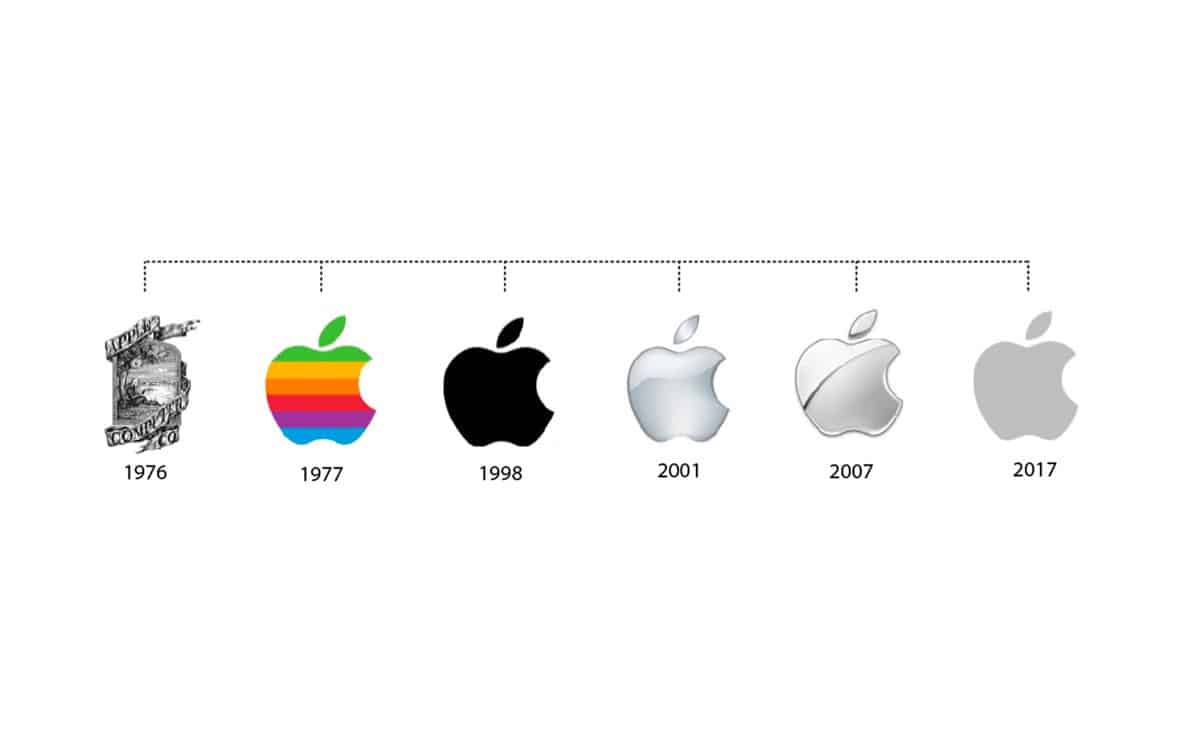|
Getting your Trinity Audio player ready...
|
Have you ever wondered why some companies change their logo, name, or overall brand identity? This process is known as rebranding, and it plays a crucial role in the success and growth of a business.
Whether you are a business owner or simply curious about the world of marketing, understanding the concept of rebranding is essential.
In today’s competitive market, businesses are constantly seeking ways to stand out and connect with their target audience. Rebranding is more than a cosmetic makeover; it’s a strategic initiative that can breathe new life into a brand, adapting it to changing times, and aligning it with evolving business goals, values, and target market.
It is a multifaceted process that requires careful planning and execution. In this comprehensive guide, we will delve into the world of rebranding and explore its various aspects.
Whether you are considering rebranding your own business or simply want to understand the dynamics of this marketing strategy, this guide will equip you with the knowledge you need.
Rebranding
Rebranding is the strategic overhaul of a brand’s identity, adapting visual elements and messaging to align with changing market dynamics and business goals while resonating with target audiences.
What is Rebranding?
In the dynamic realm of business, where adaptability is key, the concept of rebranding has emerged as a strategic necessity. Rebranding is not a mere facelift for a brand; it is a deliberate and calculated effort to redefine a brand’s identity.
The Essence of Rebranding
At its core, rebranding involves a strategic overhaul of a brand’s identity. This encompasses visual elements such as logos and messaging, as well as the strategic repositioning of the brand in the market.
The scope of rebranding extends beyond aesthetics; it delves into the essence of what your brand represents and how it connects with your target audience.
Rebranding is like renovating a house
Rebranding is akin to renovating a house – it involves strategically updating and refreshing the overall look and feel to better align with current trends and meet the evolving needs of its inhabitants.
Key Components of Rebranding
Redefining Brand Identity
1. Logo and Visual Assets
The visual representation of your brand is often the first point of contact with your audience. A dated or misaligned logo can send unintended signals about your brand.
In rebranding, consider not just a visual refresh but a strategic realignment. A successful logo should encapsulate the essence of your brand, conveying its values, personality, and aspirations.
2. Messaging and Communication
Words matter. Your brand messaging shapes how your audience perceives you. In rebranding, revisit your brand narrative.
Is it still aligned with your mission and values? Craft messaging that resonates with your current and prospective customers. This involves not only the content but also the tone and style of your communication.
Strategic Repositioning
1. Identifying Target Audience Shifts
Consumer demographics and behaviors evolve. Reassess your target audience—is it the same group you initially set out to capture?
Through market research, identify shifts in your audience’s preferences, habits, and values. Your rebranding strategy should align with the expectations and aspirations of your current target audience.
2. Adapting to Industry Changes
Industries are in a constant state of flux. Technological advancements, cultural shifts, and global events can reshape entire sectors.
A successful rebrand involves not only adapting to these changes but also positioning your brand as a leader amid industry transformations. Anticipate future trends and position your brand ahead of the curve.
Implementing Changes Across Platforms
1. Website and Online Presence
In today’s digital age, your online presence is often the first interaction customers have with your brand. A rebranding effort should extend to your website, ensuring that it not only reflects the new visual identity but also provides a seamless and enhanced user experience.
2. Physical Spaces and Collateral
From storefronts to business cards, every physical manifestation of your brand should echo the new identity. Consistency across all touchpoints reinforces the message of your rebrand and ensures that customers experience a cohesive brand regardless of how they engage with it.
The Impact of Rebranding
When executed effectively, rebranding can yield numerous benefits:
- Renewed Relevance: Rebranding helps a brand regain relevance in a changing market, ensuring it stays in tune with the preferences of its target audience.
- Enhanced Perception: A well-executed rebranding effort can positively shift the perception of a brand, mitigating negative associations and fostering a more favorable image.
- Competitive Edge: By strategically positioning itself, a rebranded brand can gain a competitive edge, differentiating itself in a crowded market.
When Does Rebranding Become Necessary?
Rebranding becomes a compelling consideration under various circumstances:
- Market Evolution: When the market undergoes significant changes, a brand must adapt to stay relevant. This could involve shifts in consumer preferences, emerging trends, or advancements in technology.
- Strategic Repositioning: As a business matures or diversifies its offerings, rebranding allows for strategic repositioning. It enables a brand to communicate its new focus, target audience, or unique value propositions effectively.
- Negative Perceptions: If a brand faces negative perceptions, rebranding offers an opportunity to reset public opinion. It involves crafting a fresh narrative that addresses past challenges and aligns with a more positive and forward-looking image.
- Merger or Acquisition: In scenarios of mergers or acquisitions, rebranding helps unify diverse entities under a cohesive identity. It facilitates a seamless transition for both internal and external stakeholders.
The Process of Rebranding
Rebranding is not a one-size-fits-all process. It involves careful consideration of a brand’s history, current market dynamics, and future aspirations.
The process typically includes:
- Comprehensive Assessment: Conducting a thorough analysis of market trends, competitor landscapes, and internal strengths and weaknesses.
- Strategic Planning: Formulating a comprehensive rebranding strategy that outlines the specific changes needed and the desired outcomes.
- Implementation: Rolling out the rebranding changes across various touchpoints, which may include visual elements, messaging, and online and offline presence.
- Feedback and Iteration: Gathering feedback from stakeholders, including customers and employees, and iteratively refining elements based on insights received.
Navigating the Rebranding Process
Formulating a Comprehensive Rebranding Strategy
1. Conducting Market Research and Analysis
Successful rebranding begins with a deep understanding of your market. Conduct thorough market research to identify trends, assess competitors, and gain insights into consumer behavior.
Analyze your existing brand performance, pinpointing strengths to retain and weaknesses to address. This foundation of data will inform every subsequent step in your rebranding journey.
2. Collaborating with Design and Marketing Experts
Rebranding is a multifaceted endeavor requiring design, marketing, and strategic planning expertise. Collaborate with professionals who specialize in brand development.
From graphic designers to marketing strategists, assembling a skilled team ensures that your rebranding effort is not only visually appealing but strategically sound.
Managing Internal Communication
1. Aligning Team Members with Rebranding Objectives
Your internal team is a crucial stakeholder in the rebranding process. Communicate the objectives of the rebrand, emphasizing the strategic reasons behind the change.
Aligning your team with the vision and values that drive the rebrand fosters a sense of ownership and commitment.
2. Addressing Employee Concerns and Expectations
Change can be met with resistance, and addressing employee concerns is paramount to a smooth transition. Provide forums for open communication, address questions transparently, and involve employees in the process where possible.
An informed and engaged workforce becomes a driving force in the success of your rebrand.
Timing and Rollout Strategies
1. Phased Approach vs. Swift Implementation
The timing of your rebranding rollout is a critical decision. Consider whether a phased approach, introducing elements of the new brand gradually, aligns with your goals, or if a swift, comprehensive implementation is more suitable.
Both approaches have their merits, and the choice should reflect the nature of your business and the expectations of your audience.
2. Ensuring Consistency Across All Touchpoints
Consistency is the linchpin of successful rebranding. Every interaction with your brand—online, offline, in-store, or on social media—should convey a cohesive message.
Develop a detailed style guide to ensure uniformity in visual elements, messaging, and brand voice across all touchpoints.
Measuring the Success of Rebranding
Key Performance Indicators (KPIs) for Rebranding
1. Changes in Customer Perception and Loyalty
The ultimate goal of rebranding is to positively influence how your audience perceives your brand. Track changes in customer sentiment through surveys, social media listening, and other feedback channels. Increased positive sentiment and strengthened customer loyalty are indicative of a successful rebrand.
2. Impact on Sales and Revenue
Rebranding is an investment, and its impact should be measurable. Analyze sales data before and after the rebrand, considering factors such as conversion rates, average transaction value, and overall revenue.
Positive shifts in these metrics demonstrate that your rebranding efforts are resonating with your target audience.
Post-Rebranding Analysis and Adjustments
1. Gathering Feedback from Customers and Stakeholders
After the initial rollout, actively seek feedback from customers and stakeholders. Understand their perceptions of the new brand identity, messaging, and overall experience.
Customer insights and external perspectives are invaluable in refining your brand strategy post-rebranding.
2. Iterative Refinement of Brand Elements
Rebranding is not a one-time event; it’s an ongoing process of refinement. Analyze performance data and feedback to identify areas for improvement.
This could involve tweaking visual elements, adjusting messaging, or fine-tuning your brand positioning. The ability to adapt and refine is key to long-term success.
Rebranding Case Studies
Successful Rebranding Stories from Diverse Industries
1. Apple Inc. – A Case Study in Simplicity and Innovation
Apple’s journey from a niche computer company to a global tech giant is a testament to the power of strategic rebranding.
The shift from the multicolored Apple logo to the minimalist design we recognize today symbolizes simplicity, innovation, and a focus on user experience. Apple’s rebranding journey highlights the importance of aligning visual elements with evolving brand values.

2. Nike – The Power of Branding with Purpose
Nike’s iconic “Just Do It” campaign is a masterclass in aligning brand messaging with a larger purpose. The campaign, launched in the late 1980s, transformed Nike into a symbol of empowerment and motivation.
Nike’s rebranding success lies in its ability to connect with the aspirations of its target audience, creating a brand that goes beyond products to embody a lifestyle.
3. Coca-Cola – Creating Timeless Brand Identity
Coca-Cola’s enduring success is a testament to the art of maintaining brand identity while adapting to changing times. The brand’s iconic red and white color scheme, coupled with its signature contour bottle, has remained largely unchanged for decades.
Through subtle refinements and innovative marketing campaigns, Coca-Cola has sustained its timeless appeal. This case study emphasizes the significance of evolution within the bounds of brand heritage to ensure longevity.

In these case studies, we witness the transformative impact of rebranding across diverse industries. From tech giants to athletic apparel and beverage icons, each brand’s journey offers unique insights into the art and science of successful rebranding.
Start Rebranding
As we conclude this comprehensive guide to rebranding, it’s crucial to recognize that rebranding is not a singular event but a dynamic process. It’s a commitment to evolution, a strategic response to changing landscapes, and a testament to a brand’s resilience and adaptability.
Empowering your brand through rebranding requires a blend of strategic foresight, creativity, and a deep understanding of your audience. It’s about shaping a narrative that not only resonates with the present but also anticipates the future.
If you are contemplating a rebranding journey, our parting advice is to approach it with a sense of purpose, guided by data-driven insights, and executed with a commitment to transparency and adaptability. Your brand’s identity is a living entity, capable of growth and transformation, and rebranding is the catalyst that propels it forward.
Should you seek personalized guidance on your rebranding journey, consider consulting with The Brand Shop.
Our team of seasoned branding experts is dedicated to crafting personalized strategies that align with your vision, resonate with your audience, and propel your brand toward lasting success.
Whether you’re navigating the intricate landscape of visual identity, messaging refinement, or strategic repositioning, The Brand Shop is your compass in the rebranding journey.
Ready to redefine your brand narrative? Contact us at The Brand Shop today and embark on a transformative rebranding experience. Your brand’s evolution starts here.
